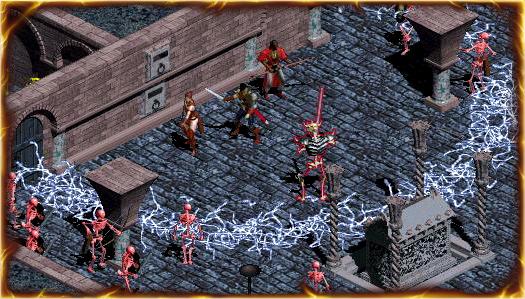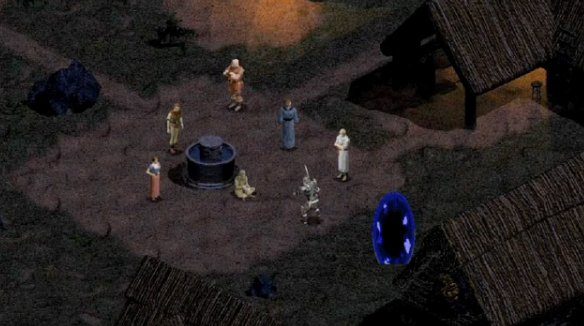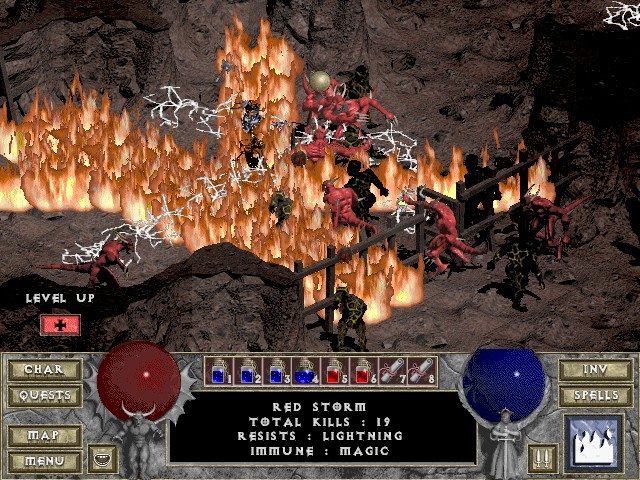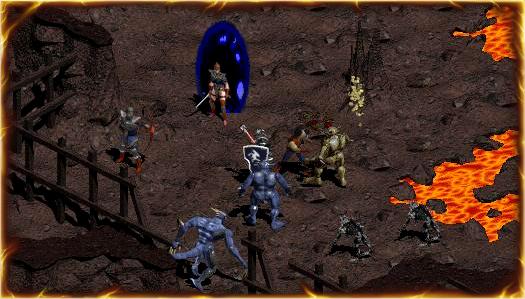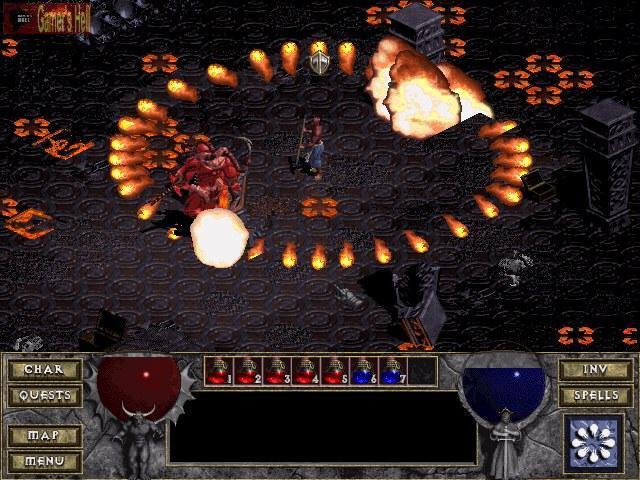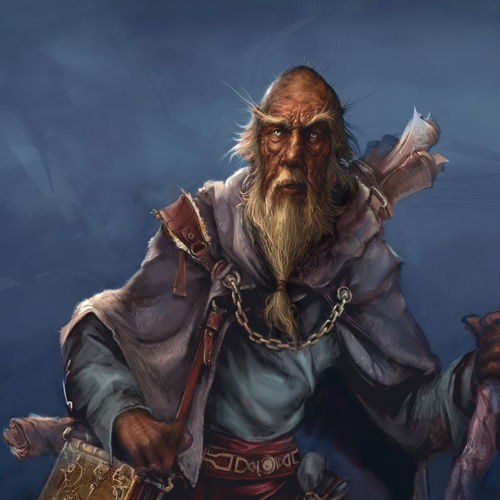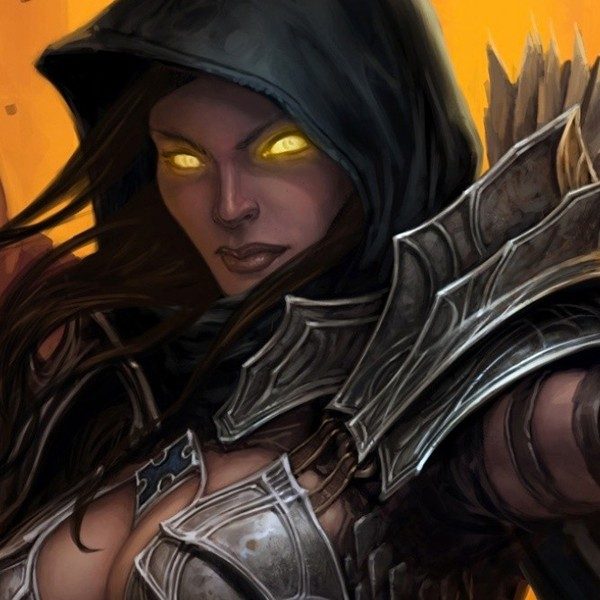

Looking at game design documents is, simply put, fun. Among other things, they allow us to trace the genesis of a developer’s brainchild, indulge in cut features that could have been oh-so-cool, or wipe our brows at game design disasters narrowly avoided. But what if we get to see the humble origins of not only a beloved game, but of a game that went on to define an entire genre, like the isometric dungeon crawler? The original design pitch for the first Diablo game provides us with the opportunity to do just that. It was released yesterday by David Brevik himself, who is best known as one of the co-creators of the Diablo series and as former CEO of Gazillion before stepping down in January to form his own company, Graybeard Games.
You can read the entire document here in all of its coffee-stained glory. Below, we’ll list some of the choice takeaways that should be important to Diablo fans, non-fans, and prospective game designers alike.
The proposal was created by Condor, Inc., which was founded in 1993 and would later become Blizzard North after Blizzard purchased Condor in 1996, just nine months before the release of Diablo.
The document opens with a hauntingly prophetic statement:
Diablo captures familiar fantasy elements within a unique structure designed for maximum replayability, expandability, and versatility. […] As games today substitute gameplay with multimedia extravaganzas, and strive toward needless scale and complexity, we seek to reinvigorate the hack and slash, feel good gaming audience. Emphasis will be on exploration, conflict and character development in a dark quest for justice.
Contemporary independent game developers seem to be following in Condor’s steps, but could today’s big name game developers take a cue from Diablo‘s design philosophy, in an age of ever-expanding “multimedia extravaganzas?”
From the get-go, Diablo was planned to receive several expansions. It eventually did get one in 1997 in the form of Diablo: Hellfire, which was developed by Synergistic Software and was produced by the company then known as Sierra On-Line (which would later become Sierra Entertainment).
Diablo tasked the player with guiding a single hero through dungeons to defeat “the devil himself,” the titular Diablo. Its definitive isometric perspective was also present at the game’s inception. What Diablo fans may find shocking, though, is that the game was originally intended to be a turn-based RPG. Players would move their character through dungeons tile-by-tile, encountering monsters, traps, and treasure along the way like a traditional Roguelike or dungeon crawler of the time. Though the Diablo we know today still bears traces of tile-based movement and combat, its comparatively fluid gameplay likely played a large role in separating Diablo from its peers. Had Condor stuck with the original tile-based design, would the RPG genre have stagnated? We may never know.
As per RPG convention, players would upgrade their characters’ gear and skills by gaining experience in dungeons. They would be able to choose “many” character classes at the start of the game, each with their own strengths and weaknesses. Players would make frequent trips back to the beleaguered town above to repair gear, embark on quests, and talk to the terrified populace of what would later become Tristram. All of these features would make it to the final version of Diablo in some form or another, with the exception of being able to choose the character’s “race.”
Diablo was intended to support 2-player and multi-player game sessions “via modem or network.” The multiplayer aspect would have interacted rather obtusely with Diablo’s original turn-based format; players would have had to have chosen their action within a set time limit or lose their turn. Once all players have selected an action, the game progresses. A PvP arena would also be available for players to test their skills against one another. This, too, made it into the final version of the game.
According to the document, the “heart” of Diablo lies in its procedurally generated dungeons, which would use Condor’s Dynamic Random Level Generation (DRLG) System. The unpredictability of a player’s adventures in Diablo would broaden its replay value. In retrospect, the entire Diablo series has become quite successful at nurturing the protean aspect of individual play sessions, a quality soon to be copied and re-worked by countless dungeon crawler developers in the years to come.
Diablo’s signature gothic horror setting was also present from the start. The original premise placed the player in a position of revenge against the forces of Hell. A “dark, evil tone” would pervade the game, and religious overtones would flavor many of the game’s environments and items. Interesting to note is that multiple sequels were planned for the game, which would lead players into non-Tristram environments like “goblin caves” and “a living fungus world.” To access these new worlds, players would simply purchase expansion disks. Sound familiar?
A detailed explanation of Diablo’s proposed gameplay then follows. Included in this section is an example of an enemy encounter using the original tile-based system. Also interesting to note is that the game was planned to be “hardcore” from the start. The document states that if a player died, the character would have been completely erased from the hard drive! At least Diablo II and III have the dignity of keeping your dead Hardcore heroes on your character screen to let you honor your fallen.
And now for the juiciest bits: marketing. It’s clear that Condor was very, very intent on selling expansion packs for Diablo, a move that today arouses much ire in the hearts of many gamers. Each expansion would cost around $4.95, and would contain a smattering of new gear, locations, objects, and enemies. These expansions would act like modules in that their contents would be ‘injected’ into the DRLG system.
Amusingly enough, the expansions would be placed near cash registers and checkouts as “point-of-purchase” displays, in an attempt to coerce players into buying them as an “afterthought.” Rare collector cards may also make an appearance in a pack, thus adding a layer of collectability to expansion disks.” This idea took inspiration from Magic: The Gathering, as well as from shareware and demo disks found at computer retail stores. Game developers in particular, however, had not yet tapped into this form of marketing. Today, we call it DLC. The devil, as we often come to learn, lies in the details.
Finally, the pitch briefly discusses Condor’s development plans for Diablo. The Bay Area studio originally planned to complete the game in just one year. Among their chief concerns were the sheer amount of art assets required to bring Tristram to life: each monster, for example, would require at least 50 frames of animation. Player characters would require even more work, since they would be opening chests, casting spells, and performing other, non-monstery actions. Clean interfaces were also key for Diablo’s success, and would require extensive time to iron out. Diablo was planned to undergo at least four months of beta testing and “playbalance.”
It’s shocking to see just how different – and how familiar – the final Diablo product is. Moreso is the fact that it brought countless innovations to the dungeon crawler table, and would go on to influence generations of game developers.
Those who are interested in learning even more about Blizzard North’s seminal work can read PC Gamer’s article on Brevik’s lecture at GDC last week, which discusses topics from the horrors of Diablo’s rampant hacking scene to the birth of Battle.net.
With any luck, we will one day be able to read the original proposals for Diablo II. Or perhaps we will face true terror itself: the design documents for the original release of Diablo III, accompanied by the reasoning behind its real-money auction house. Should that day ever come to pass, hopefully future game developers will take heed of the sins within and never repeat them again.
Play games, take surveys and take advantage of special offers to help support mxdwn.
Every dollar helps keep the content you love coming every single day.

